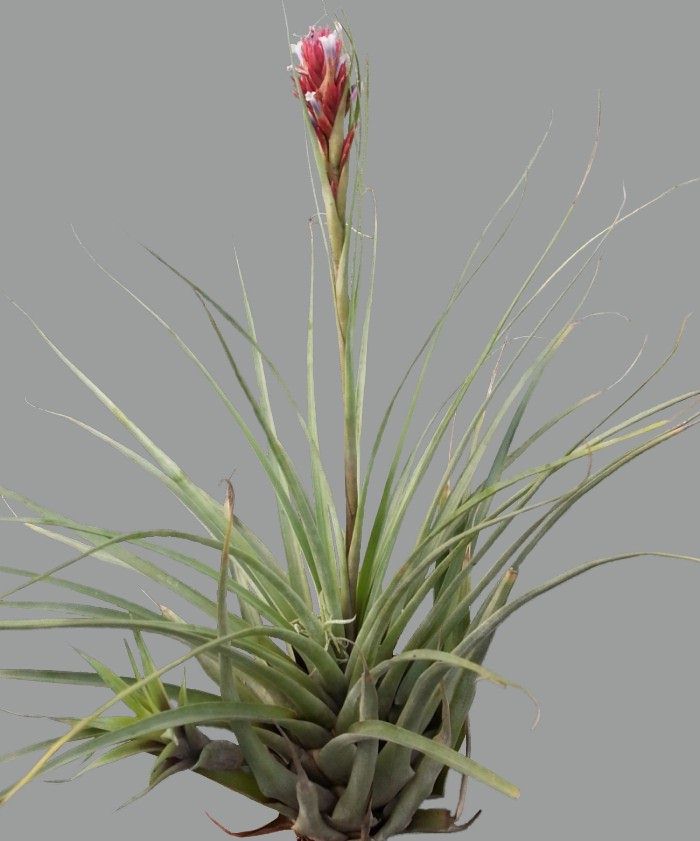
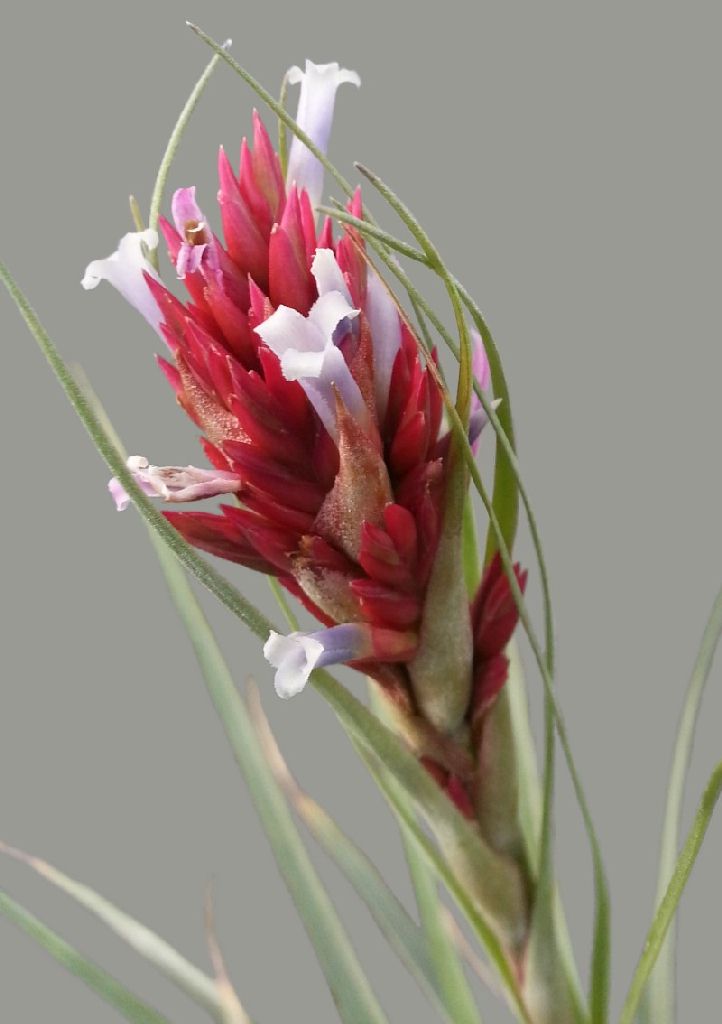
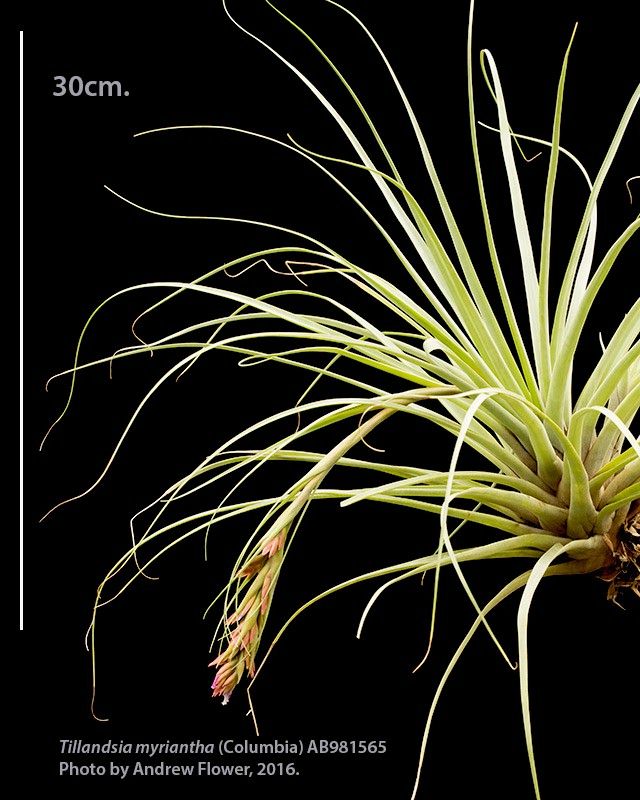
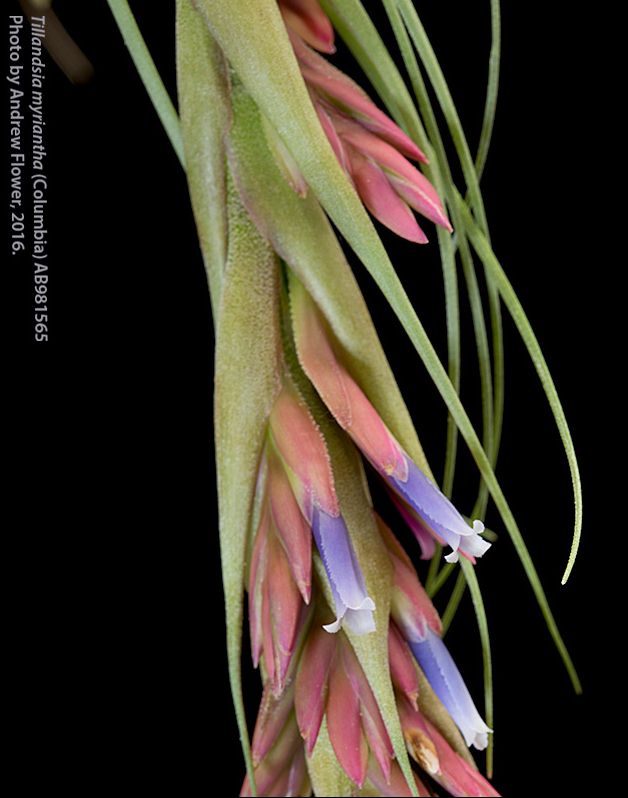
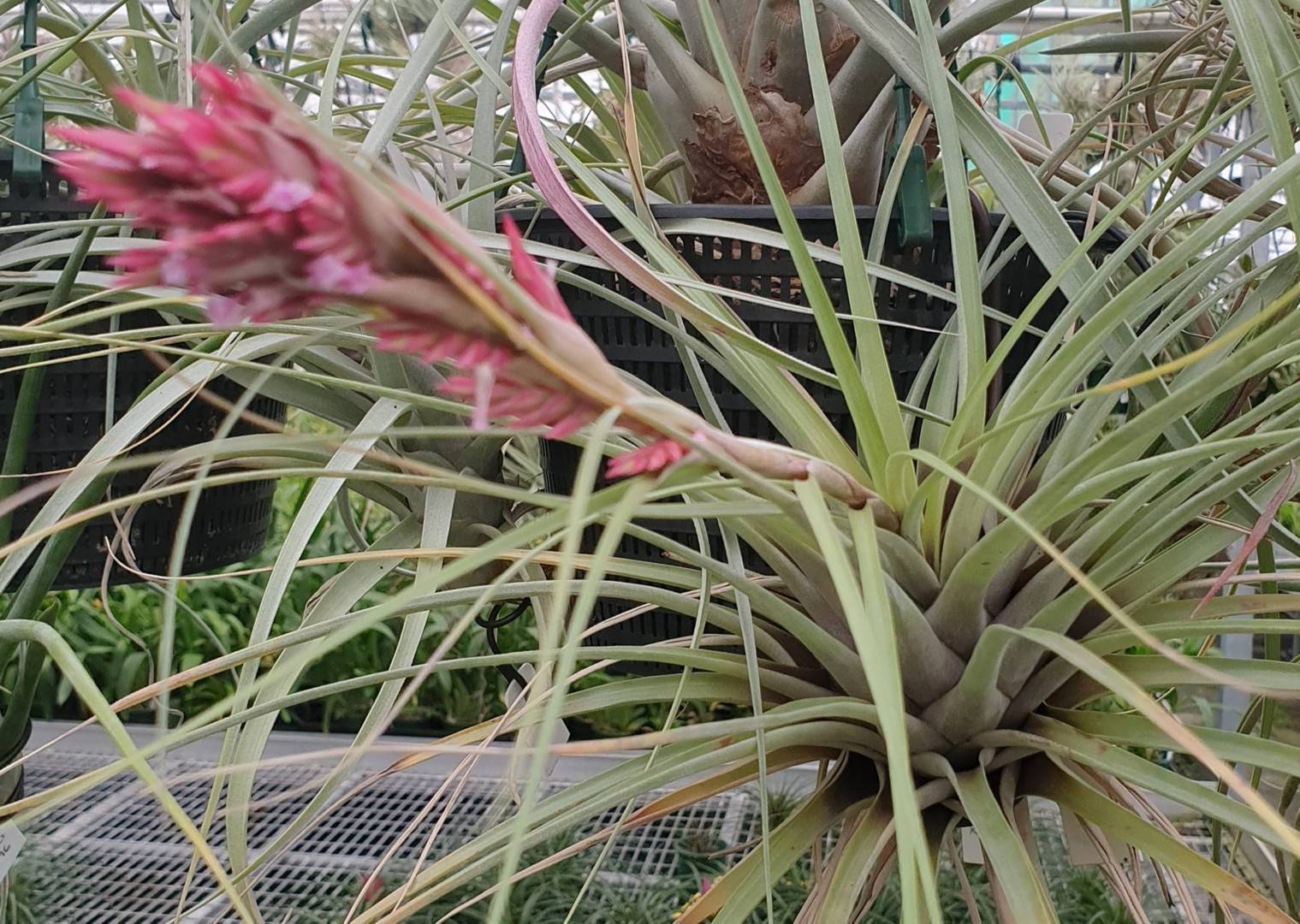
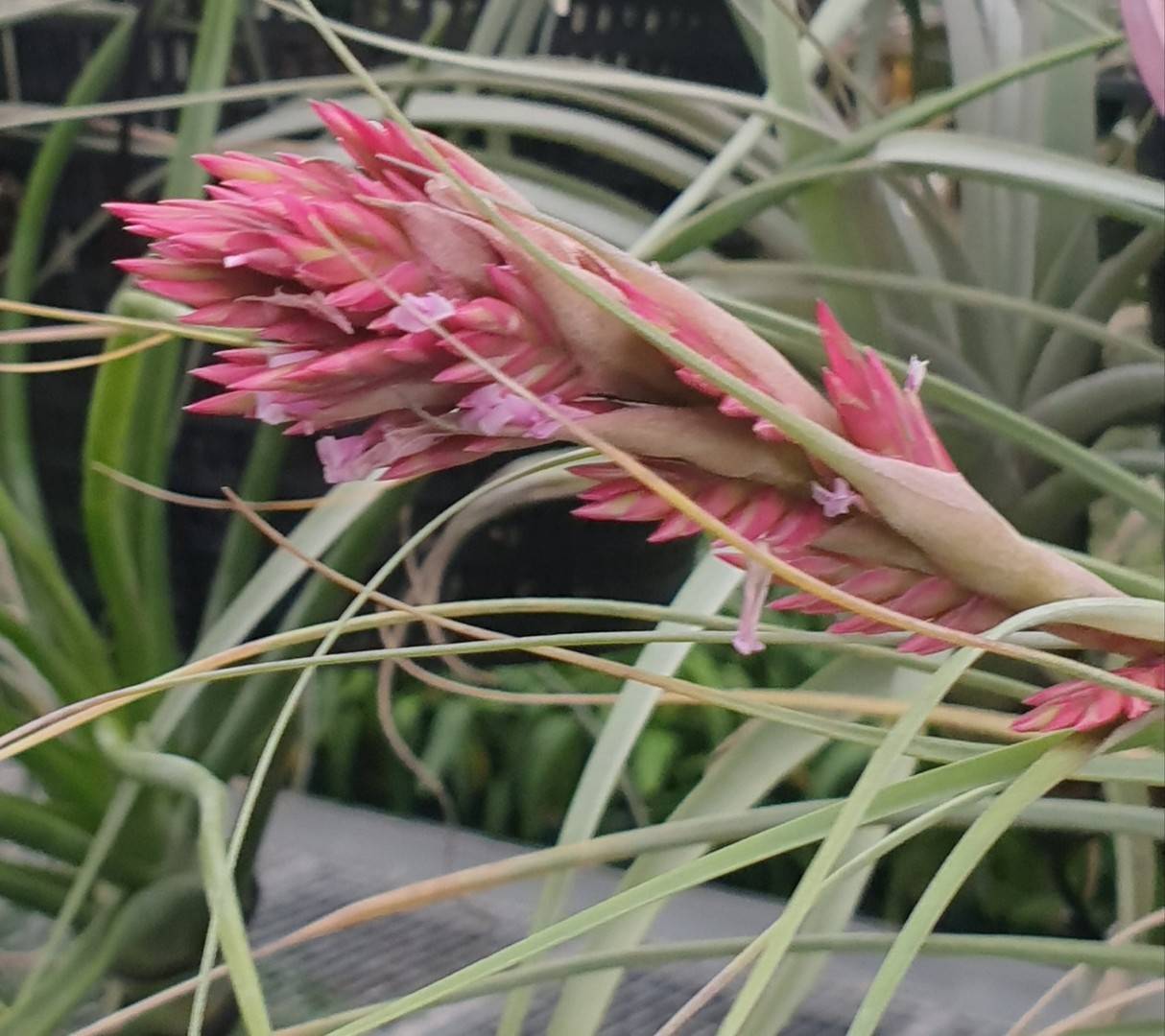
Plant received as Vriesea appenii from Gruber in Colombia in ?1991 but appears to be Tillandsia myriantha. Description by R Ehlers.
Plant stemless, making an erect rosette, offsets with 10cm long stolons.
Leaves to 25cm long.
Sheath 4cm long, to 3cm wide, oval, distinct, dark brown, fine brown lepidote.
Blade very thin triangular, filiform acuminate, involute, dark green.
Scape slender, bent, to 20cm long, extensively covered by imbricate leaflike scape bracts.
Scape bracts sheath lancelike oval, with erect filiform blade to 15cm long.
Inflorescence densely bipinnate, narrow elliptic, 6cm long, 2.5cm wide with 15 dense erect upright compound spikes.
Primary bracts sheath as long as the lower spikes with a filiform blade to 4cm long, the upper ones gradually shortened and short tipped.
Spike to 3cm long, 1 – 1.4cm broad, broad elliptic, complanate, the base with 1cm long stem, with 9 sessile, imbricate, non-scented compound flowers, the rhachis visible at anthesis.
Floral bracts 8 – 11mm long, 5-6mm wide, oval-deltoid, acuminate, 1 – 3mm shorter than the sepals, dark red, glabrous, thin, (inside large punctulate lepidote), more or less keeled.
Sepals 9 –11mm long, (3.5 -) 4 – 5mm wide, elliptic acuminate, bottom half green, upper half red, thin, glabrous, sub-free, (ca 2mm attached with the ovary), the posterior ones keeled.
Petals 15-18mm long, to 4mm wide, narrowing to 2mm at the base, lanceolate-acuminate, the tips very strongly rolled outwards, the edges finely crenulate, the bottom third white then lavender, the top 3cm white later turning dark pink, at the base 2 white lanceolate tongue-shapd ligules with fine serrated edges, one third as long as the petal.
Stamens enclosed in flower,
Filament 8mm long, filiform, thin, straight, white,
Anther 2mm long, linear, joined almost at the base, yellow, becoming brown later,
Style 6-10mm long, white, thin, lobes very small, erect, light green.
Ovary 2.5mm long, 2mm wide, oval, light green.
Differs from V. fragrans in :
Offsets with 10cm long stolon
Inflorescence more compact
Spike with 1cm long stalk.
Primary Bracts much longer
Flowers not scented
Floral bracts oval-deltoid, shorter than sepal, glabrous.
Sepals keeled.
Petals crenulate, the tips strongly rolled outwards.
Letter from Harry Luther on 25 Feb 1994 in answer to my query
At least some of the V. didistichioides from Cathcart were T. myriantha but I seem to remember some with longer branches that seemed typical V. didistichioides. My problem is always having plants stuck in my face (without my files, microscope, herbarium etc) and being forced to come up with a name NOW so that the items can be sold. I think I still have a plant of T. myriantha alive so I will check out its appendages when flowering. Not that it matters, the complex to which it probably belongs may or may not have “nectar scales” V. fragrans, V. crenulipetala, V. didistichioides, V. heterandra, V. chontalensis, V. appenii, V. piepenbringii, V. lacera, Tillandsia rusbyi, T. myriantha, and T. bismarkii. Probably all close to T. tectorum, T. heteromorpha, T. floribunda etc
Another problem is V. lacera which appears similar but has lepidote floral bracts where T. myriantha does not (or only a little). The only Vriesea in this group with more or less glabrous floral bracts is V. didistichioides according to Smith who I am beginning to disregard. When all the dust has settled after re-sorting the Tillandsioids by various people I may look into this group of narrow grey leaf Andean Allardtia.